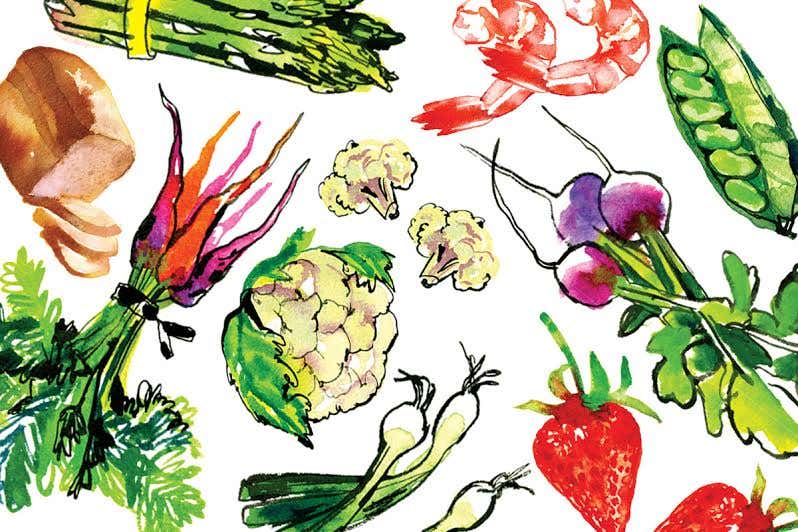
Another Kind of Market
La Boqueria is Barcelona's historic, romantic, downtown market, serving retail and wholesale customers alike. But the city's largest and most important market by far is Mercabarna—a distinctly modern, unromantic, wholesale-only compound covering 222 acres of land near the city's airport. Mercabarna is the second-largest wholesale market in Europe, in fact, after Rungis, outside Paris, and the largest one in southern Europe. More than 900 companies sell their wares here—fruit, vegetables, herbs, fish, fowl, meat, plants and flowers, and specialty food items of many kinds. Last year, just for starters, roughly 900,000 tons of produce alone moved through the central market pavilion.
My friend Annette Abstoss—who hails from Greenwich, Connecticut, but has lived in Barcelona for nine years—works at Mercabarna, for a wholesaler called Fruits Guzman. Her boss, Jordi Manobens Rodon, is a true child of La Boqueria: his parents met in the market, where his mother ran a fruit stand across the aisle from his father's salt cod stall. Jordi followed them into La Boqueria but then, about a dozen years ago, bought an existing Mercabarna produce business. Today, Fruits Guzman carries products from Catalonia (pink onions from Figueres; the exquisite tomatoes from Montserrat) and elsewhere in Spain ("spring" artichokes from Murcia—in November; machine-peeled favas grown locally) but also stocks a whole world of other delights: pineapples from Costa Rica and the Ivory Coast, passion fruit and snow peas from Zimbabwe, lemongrass from Thailand, kumquats from China, grapes from Argentina and Chile, asparagus from Peru, salad greens you've never heard of from Brittany (cordifole, ficoide glaciale, tetragone)—as well as products like balsamic vinegar, wasabi, and a full line of Goya and Heinz condiments. "The old chefs here were used to getting whatever there was," explains Annette—who counts top Catalan restaurants like Can Gaig, Drolma, and the three-star El Bulli and El Raco de Can Fabes among her customers—"but now chefs demand what they want." Part of her job is to introduce them to, and make them want, unfamiliar fruits and vegetables from around the world. She is not always successful. "I tried to sell tomatillos here," she says. "We actually grew our own, 3,200 pounds of them. I ended up eating them all myself."
Keep Reading
Continue to Next Story










